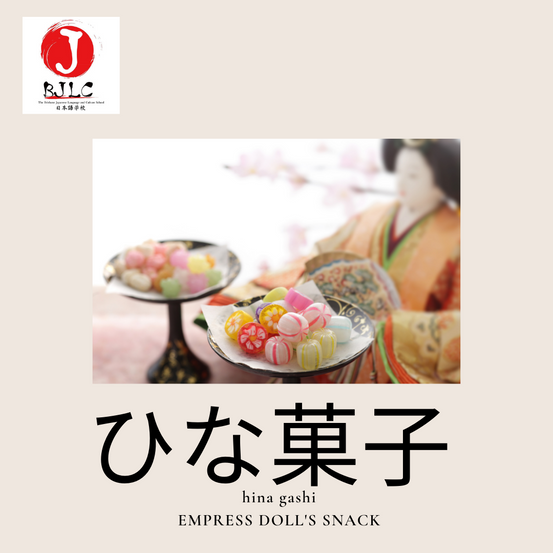
#Hinamatsuri also called Doll's Day or Girls' Day, is a special day for young girls in Japan.
Origin of Hinamatsuri
There are various stories for the origin of Hinamatsuri in Japan.
In Heian period Japanese people had custom to transfer their discomforts and illnesses to the paper figures, and then put them in the river to let them flow away which is called ‘Nagashibina – flowing doll’. This custom still can be seen in some of the places in Japan such as “Mochigase Nagashibina’ in Tottori Prefecture.
Set of hina dolls were originally made for Emperor’s daughter to play with; therefore, the set includes Emperor, Empress, Imperial court ladies, musicians, ministers and guards and items used in the palace.
In the late Edo period, the custom evolved into using the modern hina dolls and become accessible and popular among typical people, and Hinamatsuri was created to remove bad luck and pray for the healthy growth of the family's daughters.
Celebration Date
Originally celebrated on 3 March on the old calendar, Hinamatsuri celebration was changed to 3 March on the Gregorian calendar after the Meiji Restoration. Since 3 March on the old calendar is the season when peach blossoms are in full bloom, Hinamatsuri is also known as Peach Blossom Festival (Peach Festival).
Deliciated Hina Dolls and display
Some Japanese families purchase their own hina dolls for their daughters for Hinamatsuri while other families hand down the dolls from mothers to daughters and then taken them away as dowry when the daughters are married.
Traditionally, the hina altar is seven stairs long with a total of 15 hina dolls.
There are different rules for the timing of the display, the configuration of the figures and objects on each level, and the timing of the collection.
For example, the dolls are usually prepared a week or two before Hinamatsuri. And it is important to put the dolls away by end of 3 March. This is because in Japan it is said that if the dolls are put away after 3 March, the daughter's wedding will be postponed.
Hinamatsuri Cuisine
Traditionally the dolls are accompanied by a dessert called, Hishi mochi (菱餅, ひしもち), which is a typical dish for Hinamatsuri. It is made up of three colours (red, white and green) and is usually in the shape of a diamond. The three colours have different meanings, with red representing peach blossom, white representing white snow and green representing the new green earth, symbolising the blossoming of peach and the renewal of greenery under the white snow, wishing the girls healthy growth with the arrival of spring.
Clam soup is also a common dish on Hinamatsuri. As the two shells of the clam are tightly knitted together, it symbolises the daughter will be able to find a suitable partner.
Chirashi sushi is made with shrimps, lotus roots and beans to symbolise good luck. It is served with green leaves, carrots and shredded eggs to create a colourful dish that symbolises the blossom of spring. In addition, Japanese people also eat cherry blossom cakes, and other confectionery on this day.
The Brisbane Japanese Language and Culture School















Comentarios